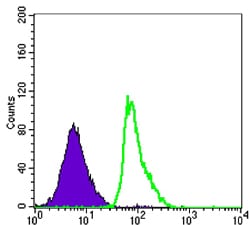FCER2 Primary Antibody
The human leukocyte differentiation antigen CD23 (FCE2) is a key molecule for B-cell activation and growth. It is the low-affinity receptor for IgE. The truncated molecule can be secreted, then functioning as a potent mitogenic growth factor.(supplied by OMIM) . It is expressed on most mature, conventional B cells (but not on peritoneal CD5+ B cells), and can also be found on the surface of T cells, macrophages, platelets and EBV transformed B lymphoblasts. Expression of CD23 has been detected in neoplastic cells from cases of B cell chronic Lymphocytic leukemia. CD23 is expressed by B cells in the follicular mantle but not by proliferating germinal centre cells. CD23 is also expressed by eosinophils. CD23 is distinct from the high affinity IgE receptors found on basophils and mast cells, which mediate allergic reactions. The low affinity receptors are thought to play a role in isotype specific immunoregulation. The regulation of CD23 surface expression appears to be integral with the complex IgE system, which involves interactions of cells, cytokines, antibodies and regulatory factors. CD23 has been described as a
2. Environ Mol Mutagen. 2009 May;50(4):285-90.


